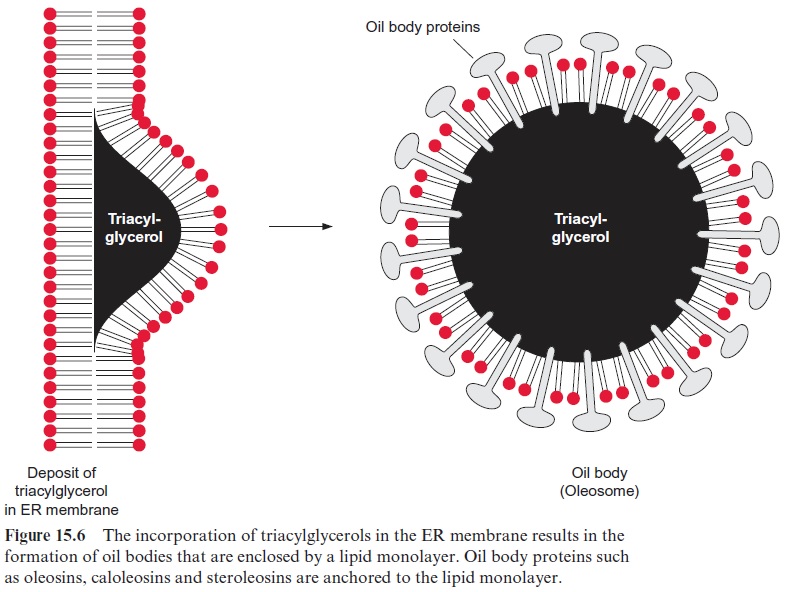Chapter: Plant Biochemistry: Lipids are membrane constituents and function as carbon stores
Triacylglycerols are storage compounds
Triacylglycerols are storage compounds
Triacylglycerols are primarily present in seeds but also in some fruits such as olives or avocados. The purpose of triacylglycerols in fruits is to attract animals to consume these fruits in order to obtain a wide distribution of the seeds. The triacylglycerols in seeds are a carbon store to supply the carbon required for biosynthetic processes during seed germination. Triacylglycerols have an advantage over carbohydrates as storage compounds, because their weight/carbon content ratio is much lower. A calculation illustrates this: in starch the glucose residue, containing six C atoms, has a molecular mass of 162 Da. The mass of one stored carbon atom thus amounts to 27 Da. In reality, this value is higher, since starch is hydrated. A triacylglycerol with three palmitate residues contains 51 C atoms and has a molecular mass of 807 Da. The mass of one stored carbon atom thus amounts to only 16 Da. Since triacylglycerols, in contrast to starch, are not hydrated, carbon stored as fat in the seed requires less than half the weight as when it is stored as starch. Low seed weight is advantageous for dispersal.

Triacylglycerols are deposited in oil bodies, also termed oleosomes or lipid bodies (Fig. 15.6). They are oil droplets, which are surrounded by a lipid monolayer. A variety of oil body proteins (oleosines, caloleosines, steroleosines) are anchored to the lipid monolayer and catalyze the mobilization of fatty acids from the triacylglycerol store during seed germination . These oil body proteins are present only in oil bodies of the endosperm and embryonic tissue of seeds. The oil bodies in the pericarp of olives or avocados, where the triacylglycerols are not used for storage but to lure animals, do not possess oil body proteins. With 10 to 20 µm in diam-eter these are much larger than the oil bodies of storage tissues (diameter 0.5–2 µm). It is assumed that newly synthesized triacylglycerol accumulates between the lipid bilayer of the ER membrane, until the full size of the oil body is reached. When the oil body buds off from the ER membrane, it is surrounded by a phospholipid monolayer.
Related Topics